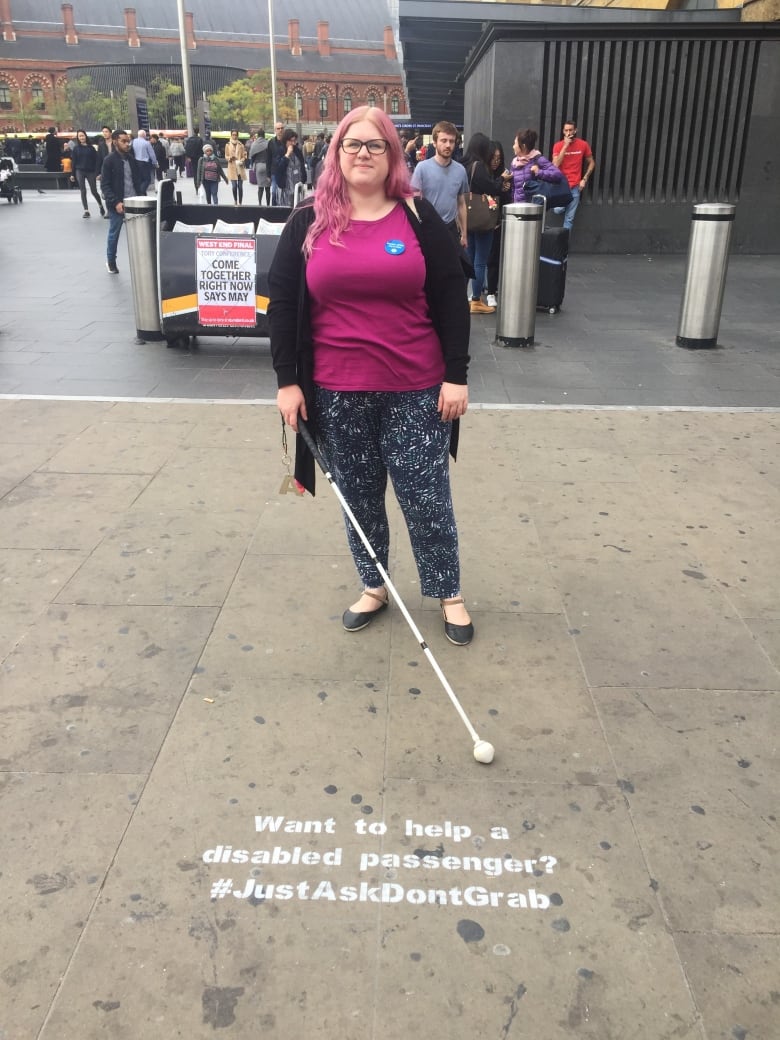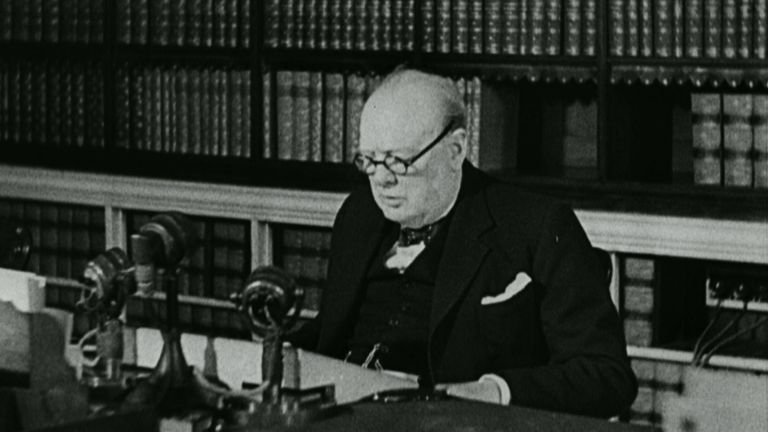Navigating The Elizabeth Line: A Wheelchair User's Guide To Accessibility

Table of Contents
Step-Free Access on the Elizabeth Line
The Elizabeth Line prioritizes accessibility, but understanding the specifics of step-free access is crucial for wheelchair users. While a significant percentage of Elizabeth Line stations offer step-free access between platforms and street level, it's important to know the exceptions and plan accordingly. This includes understanding the different types of access available, such as lifts and ramps.
- Stations with Step-Free Access: A large majority of Elizabeth Line stations offer step-free access. Check the TfL website for the most up-to-date list. Key stations such as Paddington, Canary Wharf, and Tottenham Court Road all boast comprehensive step-free access.
- Stations without Step-Free Access and Alternative Routes: A small number of stations may require alternative routes. For these, TfL's website and app provide alternative travel options using other lines or surface transport. Always check before you travel.
- Ramp and Lift Availability: Most step-free stations provide both lift and ramp access for added convenience and flexibility depending on individual needs.
- Ongoing Works and Accessibility Issues: While the Elizabeth Line strives for seamless accessibility, occasional maintenance or upgrades might temporarily affect access at certain stations. Always check for real-time updates on the TfL website or app before embarking on your journey.
Navigating Elizabeth Line Stations with a Wheelchair
Navigating Elizabeth Line stations is generally straightforward, but understanding the layout and available facilities is essential for wheelchair users. Most stations are designed with wide doorways, spacious platforms, and clear signage to ensure easy movement.
- Platform and Corridor Widths: Platforms and corridors are designed to accommodate wheelchairs comfortably, with ample space for maneuvering.
- Accessible Toilets: Accessible toilets are strategically located throughout the stations, clearly marked on station maps. These toilets offer enough space and appropriate facilities for wheelchair users.
- Requesting Assistance from Station Staff: Station staff are readily available to provide assistance with boarding trains, navigating the station, or any other needs. Don't hesitate to ask for help.
- Ramps and Tactile Paving: Ramps provide smooth access between platforms and concourses, while tactile paving guides visually impaired passengers.
Using the Elizabeth Line with Mobility Aids
The Elizabeth Line accommodates a range of mobility aids. However, understanding specific considerations for different types of aids is important for a smooth journey.
- Space Availability for Different Sized Mobility Aids: Trains offer designated spaces for wheelchairs and other mobility aids. While there's generally ample room, larger mobility aids might require advance planning, especially during peak hours.
- Boarding and Alighting Procedures: Staff are available to assist with boarding and alighting, ensuring a safe and efficient process for all passengers using mobility aids.
- Baggage Allowances and Guidelines: Transporting mobility aids and luggage is usually straightforward. However, larger equipment might require prior notification to ensure a hassle-free journey. Refer to TfL's guidelines for further details.
- Priority Seating: Priority seating areas are available on trains for passengers with disabilities, offering comfortable and convenient travel.
Planning Your Journey on the Elizabeth Line
Planning your journey effectively is key to a positive travel experience. The TfL website and app are invaluable tools for accessible journey planning.
- Using TfL's Journey Planner with Accessibility Options: TfL's journey planner allows you to specify accessibility requirements, providing routes that avoid steps and offer step-free access.
- Real-Time Travel Updates: Checking real-time updates is vital for avoiding delays or disruptions that could impact accessibility.
- Accessing Relevant TfL Websites and Apps: Utilize TfL's website and app for real-time updates, station information, and accessibility details.
- Checking Accessibility Information for Specific Stations in Advance: Before your journey, check specific station details to confirm accessibility features and any potential issues.
Conclusion
This guide provides a comprehensive overview of the Elizabeth Line's accessibility features, empowering wheelchair users to travel with confidence and independence. We've covered step-free access, navigating stations with ease, using various mobility aids, and effective journey planning.
Planning a journey on the Elizabeth Line? Use this guide to navigate the system with ease and experience the accessibility features designed to ensure a smooth and comfortable journey for all wheelchair users. Remember to utilize TfL's journey planning tools and check for real-time updates before you travel. Enjoy your accessible journey on the Elizabeth Line!

Featured Posts
-
 Bao Hanh Tre Em Tien Giang Phai Xu Ly Nghiem Cac Bao Mau
May 09, 2025
Bao Hanh Tre Em Tien Giang Phai Xu Ly Nghiem Cac Bao Mau
May 09, 2025 -
 Iron Ore Market Volatility The Role Of Chinas Steel Production Cuts
May 09, 2025
Iron Ore Market Volatility The Role Of Chinas Steel Production Cuts
May 09, 2025 -
 Mulher Presa Na Inglaterra Suspeita De Perseguir Pais De Madeleine Mc Cann
May 09, 2025
Mulher Presa Na Inglaterra Suspeita De Perseguir Pais De Madeleine Mc Cann
May 09, 2025 -
 Air India Responds To Lisa Rays Complaint Actors Claims Unfounded
May 09, 2025
Air India Responds To Lisa Rays Complaint Actors Claims Unfounded
May 09, 2025 -
 Ferdinand Predicts Champions League Winner Ahead Of Arsenal Vs Psg
May 09, 2025
Ferdinand Predicts Champions League Winner Ahead Of Arsenal Vs Psg
May 09, 2025
Latest Posts
-
 A Data Driven Analysis Of New Business Hotspots Across The Country
May 10, 2025
A Data Driven Analysis Of New Business Hotspots Across The Country
May 10, 2025 -
 Iron Ore Falls As China Curbs Steel Output Impact On Global Markets
May 10, 2025
Iron Ore Falls As China Curbs Steel Output Impact On Global Markets
May 10, 2025 -
 Understanding The Value Of Middle Management Benefits For Companies And Their Workforce
May 10, 2025
Understanding The Value Of Middle Management Benefits For Companies And Their Workforce
May 10, 2025 -
 Taiwan Faces New Totalitarian Threat Lais Urgent Ve Day Message
May 10, 2025
Taiwan Faces New Totalitarian Threat Lais Urgent Ve Day Message
May 10, 2025 -
 Analyzing The Challenges Faced By Bmw And Porsche In The Chinese Market
May 10, 2025
Analyzing The Challenges Faced By Bmw And Porsche In The Chinese Market
May 10, 2025
